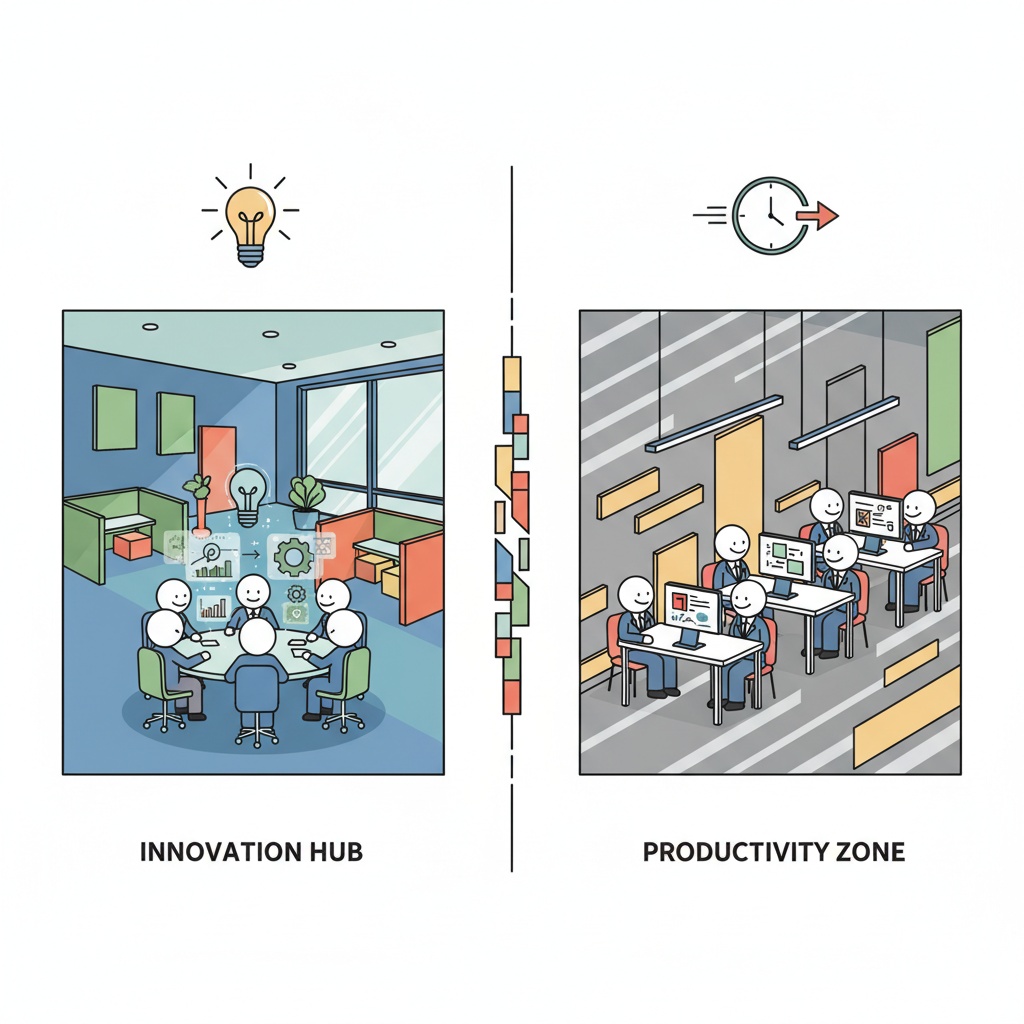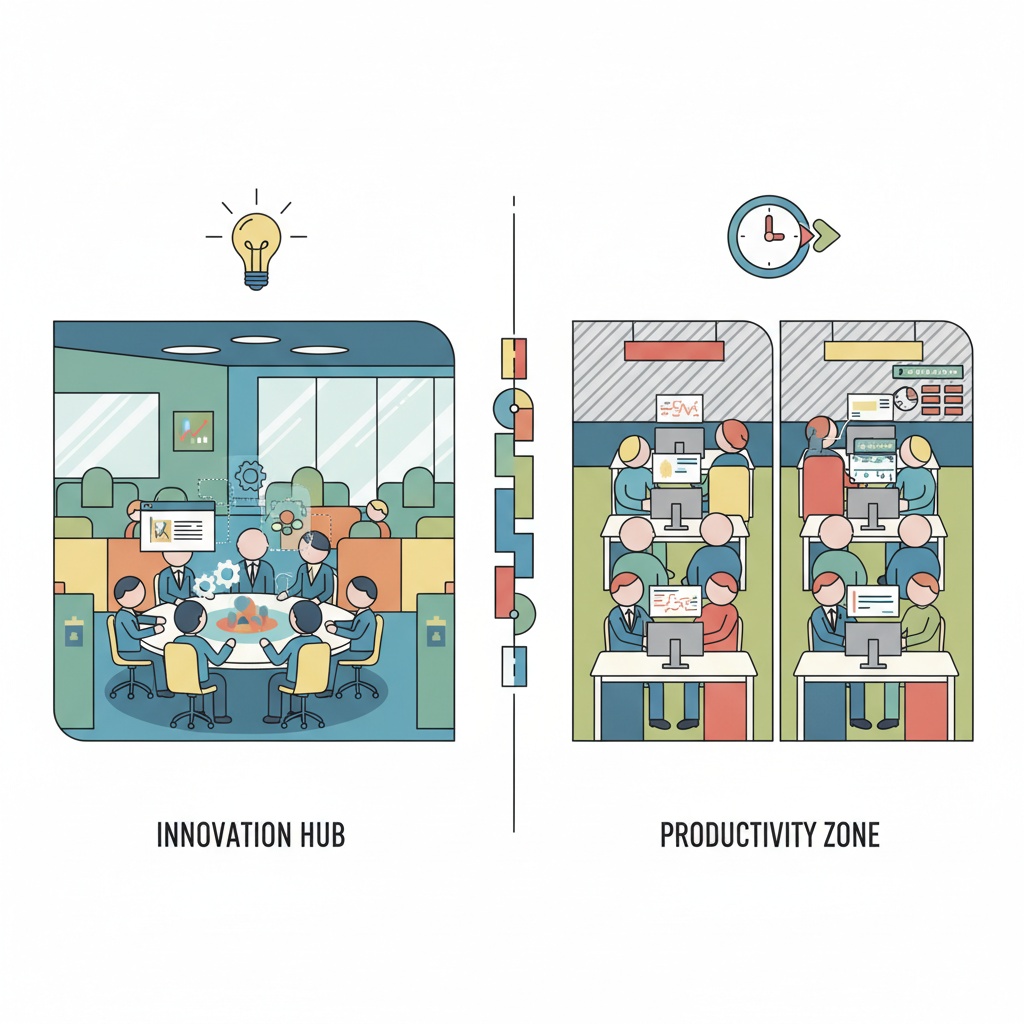
How JAFZA Compares to Other UAE Free Zones: Your Strategic Advantage Guide
Reading time: 12 minutes
Ever wondered why global giants like Samsung, Siemens, and Coca-Cola chose JAFZA over dozens of other UAE free zones? You’re about to discover the strategic advantages that set Jebel Ali Free Zone apart in the competitive landscape of Middle Eastern business hubs.
Table of Contents
- Understanding JAFZA’s Market Position
- Infrastructure & Connectivity Advantages
- Head-to-Head: JAFZA vs. Major Competitors
- Industry Focus & Specialization Benefits
- Cost Structure & Financial Advantages
- Your Strategic Entry Roadmap
- Frequently Asked Questions
Understanding JAFZA’s Market Position
Let’s start with the reality check: JAFZA isn’t just another free zone—it’s the Middle East’s largest and most established trade hub, spanning over 57 square kilometers. But size alone doesn’t tell the whole story.
Here’s what truly sets JAFZA apart: it’s home to over 10,000 companies from 100+ countries, creating an ecosystem where businesses don’t just operate—they thrive through strategic partnerships and cross-industry collaboration.
The Numbers That Matter
When examining JAFZA’s competitive position, consider these compelling statistics:
- 120+ of the Fortune Global 500 companies have established operations within JAFZA
- Annual trade volume exceeds $110 billion (approximately $114.9 billion in 2023)
- Strategic location provides access to 3.5 billion consumers within a 4-hour flight radius
- Port connectivity handles approximately 14.5 million TEU annually (based on 2023 figures)
Real-World Success Story: Samsung’s Strategic Choice
Samsung’s decision to establish its regional headquarters in JAFZA illustrates the zone’s manufacturing and logistics advantages, offering significant potential to reduce distribution costs while maintaining premium operational standards.
Infrastructure & Connectivity Advantages
Think of JAFZA as the Swiss Army knife of free zones—versatile, reliable, and equipped for virtually any business scenario. The zone’s infrastructure advantages aren’t just impressive on paper; they translate into tangible operational benefits.
Multimodal Connectivity Excellence
JAFZA’s integrated approach to connectivity sets it apart from single-focus competitors:
Connectivity Comparison Chart
Pro Tip: The right connectivity isn’t just about moving goods—it’s about creating operational flexibility that adapts to market changes.
Head-to-Head: JAFZA vs. Major Competitors
Let’s cut through the marketing noise and examine how JAFZA stacks against its primary competitors across key performance indicators that actually impact your business operations.
| Criteria | JAFZA | DIFC | ADGM | DAFZA |
|---|---|---|---|---|
| Setup Timeline | 15-20 days | 10-15 days | 10-12 days | 3-7 days |
| License Fees (Annual) | AED 15,000-50,000 | USD 25,000-75,000 | USD 30,000-85,000 | AED 20,000-60,000 |
| Industry Focus | Multi-sector | Financial Services | Financial Services | Aviation/Aerospace |
| Warehouse Availability | Extensive | Limited | Minimal | Moderate |
| Port Integration | Direct Access | No Direct Access | No Direct Access | Airport Focus |
Case Study: Manufacturing vs. Financial Services
Consider two scenarios that highlight JAFZA’s competitive positioning:
Scenario 1: A European automotive parts manufacturer needs Middle East distribution. JAFZA’s integrated port-to-warehouse model offers substantial potential to reduce handling costs compared to free zones requiring external logistics partnerships.
Scenario 2: A fintech startup seeking regional expansion. While DIFC offers specialized financial regulations, JAFZA provides broader market access with potentially significantly lower operational costs, making it ideal for growth-stage companies.
Industry Focus & Specialization Benefits
Here’s where JAFZA’s strategy becomes crystal clear: instead of narrowly focusing on one sector, it creates industry clusters that foster cross-sector innovation and partnership opportunities.
Multi-Industry Ecosystem Advantages
JAFZA’s diversified approach offers several strategic benefits that specialized zones can’t match:
- Supply Chain Integration: Manufacturing companies can directly connect with logistics and technology providers within the same zone
- Risk Distribution: Economic downturns in one sector don’t destabilize the entire zone ecosystem
- Innovation Crossover: Technology solutions developed for one industry often find applications in others
- Talent Pool Diversity: Access to professionals across multiple specializations
Quick Reality Check: While specialized zones like DIFC excel in regulatory sophistication for financial services, JAFZA’s broad approach provides operational flexibility that proves invaluable during economic uncertainties.
Cost Structure & Financial Advantages
Let’s talk numbers that actually impact your bottom line. JAFZA’s cost structure often surprises businesses accustomed to premium pricing from specialized competitors.
Total Cost of Operations Analysis
Beyond headline license fees, consider these often-overlooked cost factors:
Hidden Cost Advantages:
- Utilities Integration: Bundled utility packages can simplify administration and potentially reduce overhead
- Logistics Savings: Direct port access eliminates intermediate handling fees (typically AED 200-500 per TEU)
- Shared Services: On-site banking, customs, and support services reduce external service costs
- Scalability Options: Flexible space arrangements accommodate growth without relocation costs
Real-World Example: Case studies indicate that manufacturing companies can achieve substantial total operational savings over time by choosing JAFZA over certain specialized industrial zones due to integrated logistics and reduced administrative complexity.
Your Strategic Entry Roadmap
Ready to transform your market entry strategy from complex challenge into competitive advantage? Here’s your practical roadmap for leveraging JAFZA’s unique positioning:
Phase 1: Strategic Assessment (Week 1-2)
- Map Your Supply Chain: Identify if your business benefits more from port integration or airport connectivity
- Calculate True Costs: Compare total operational costs, not just license fees, across your shortlisted zones
- Evaluate Growth Scenarios: Consider which zone offers better scalability for your 3-5 year expansion plans
Phase 2: Due Diligence & Planning (Week 3-4)
- Site Visit Strategy: Schedule visits during peak operational hours to assess real-world infrastructure performance
- Network Mapping: Identify potential partners, suppliers, or customers already operating within your target zone
- Regulatory Alignment: Confirm specific industry requirements and compliance frameworks
Phase 3: Implementation & Optimization
- Soft Launch Approach: Consider establishing a representative office first to test market dynamics
- Partnership Development: Leverage zone networking events and business councils for strategic connections
- Performance Monitoring: Establish KPIs that measure both cost efficiency and market access effectiveness
Future-Proofing Insight: The UAE’s Economic Vision 2030 increasingly emphasizes sustainable business practices and digital transformation. JAFZA’s diverse ecosystem positions businesses better to adapt to these evolving requirements compared to narrowly specialized zones.
As Middle Eastern markets continue evolving toward greater integration with global supply chains, your choice of free zone becomes not just an operational decision, but a strategic positioning that could define your competitive advantage for the next decade. Which zone ecosystem aligns best with your long-term vision for regional market leadership?
Frequently Asked Questions
How does JAFZA’s approval timeline compare to faster competitors like DIFC?
While JAFZA’s 15-20 day setup timeline is slightly longer than DIFC’s 10-15 days, the comprehensive infrastructure access and integrated services often result in faster operational readiness. JAFZA’s timeline includes pre-integrated utilities, logistics setup, and banking relationships that competitors require additional weeks to arrange separately. For manufacturing and trading businesses, this integrated approach typically reduces total time-to-market by 2-3 weeks.
Can service-based companies compete effectively in JAFZA against specialized zones?
Absolutely. While JAFZA is renowned for manufacturing and logistics, a significant number of its tenants are service-based companies including consulting, technology, and professional services firms. The key advantage is cost efficiency—service companies can often achieve significantly lower operational costs compared to premium zones like DIFC, while still accessing the same regional markets. The diverse business ecosystem also provides broader networking opportunities and potential client bases across multiple industries.
What are the main disadvantages of choosing JAFZA over specialized competitors?
JAFZA’s main limitations include less specialized regulatory frameworks for sectors like financial services or healthcare compared to DIFC or Dubai Healthcare City. Setup processes may involve more general documentation rather than industry-specific streamlined procedures. Additionally, while JAFZA offers extensive facilities, premium office environments and prestige locations may be more limited compared to specialized business districts. However, these trade-offs often result in significant cost savings that many businesses find worthwhile for their operational requirements.

Article reviewed by Daniel Costa, Agribusiness Analyst | Studying UAE-Brazil Trade Flows, on September 22, 2025
